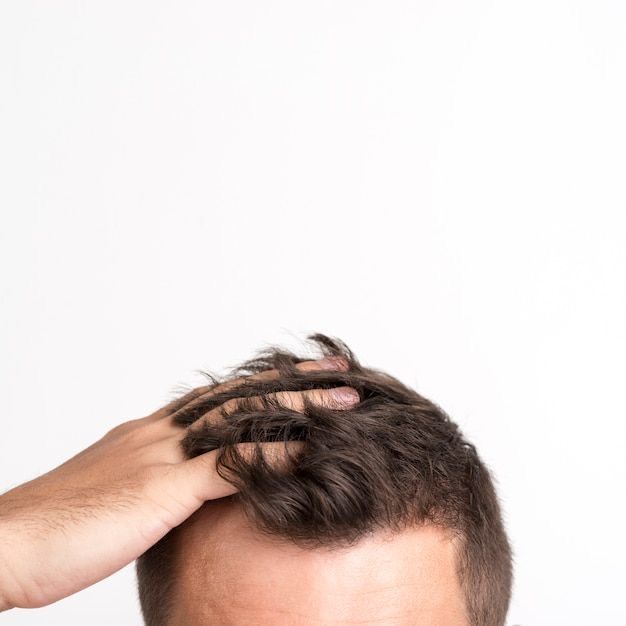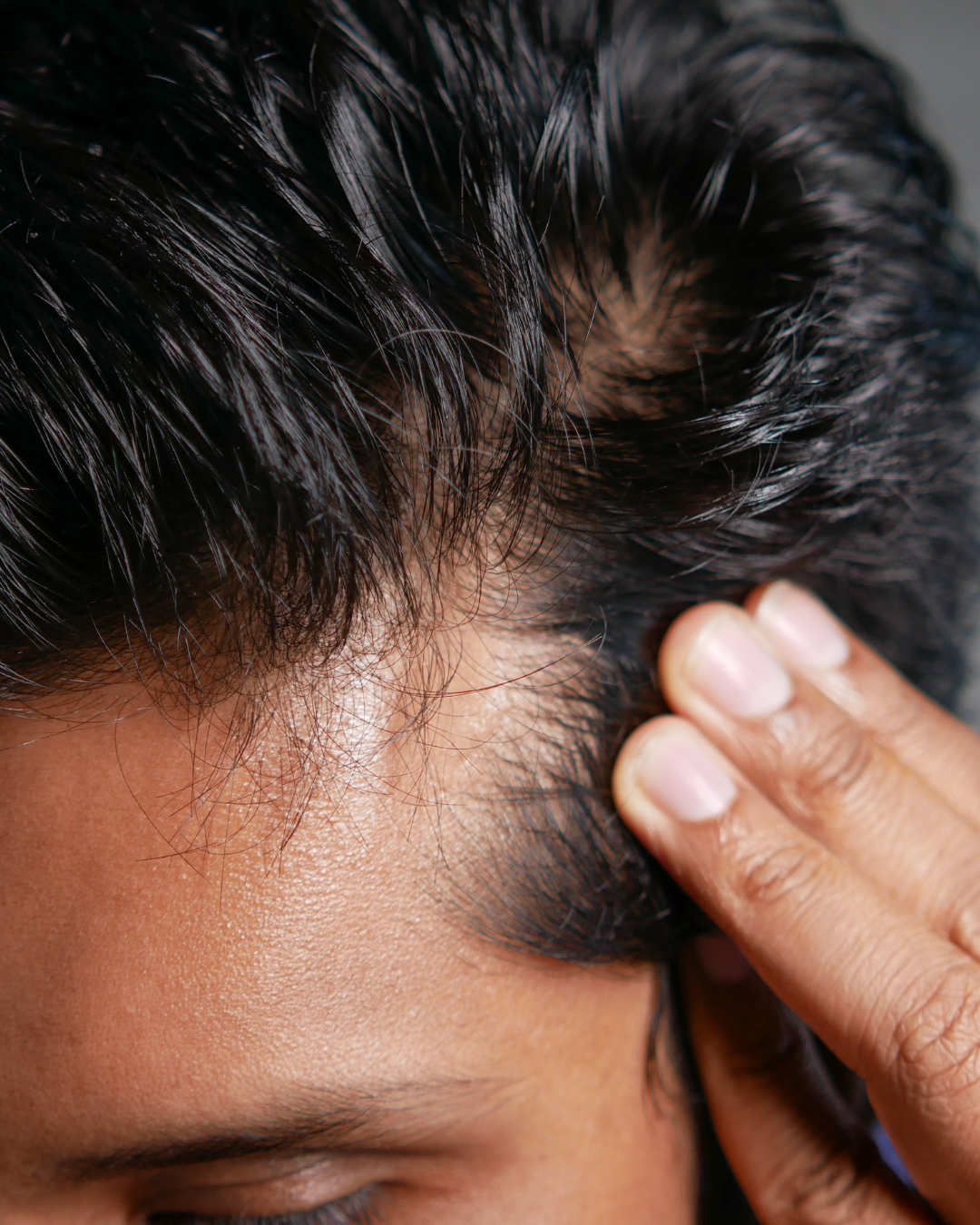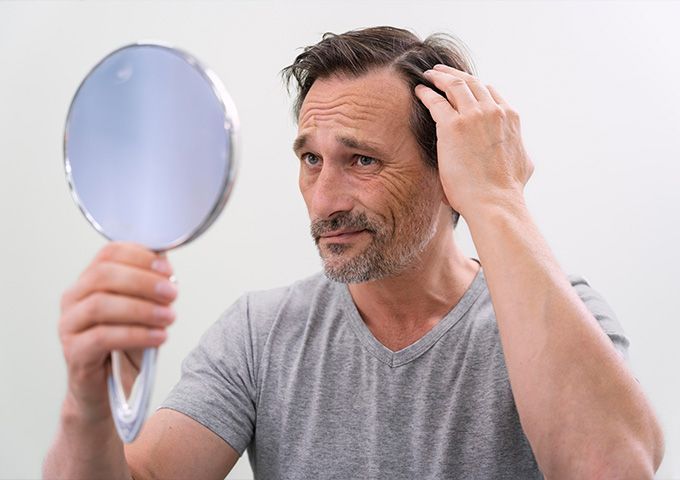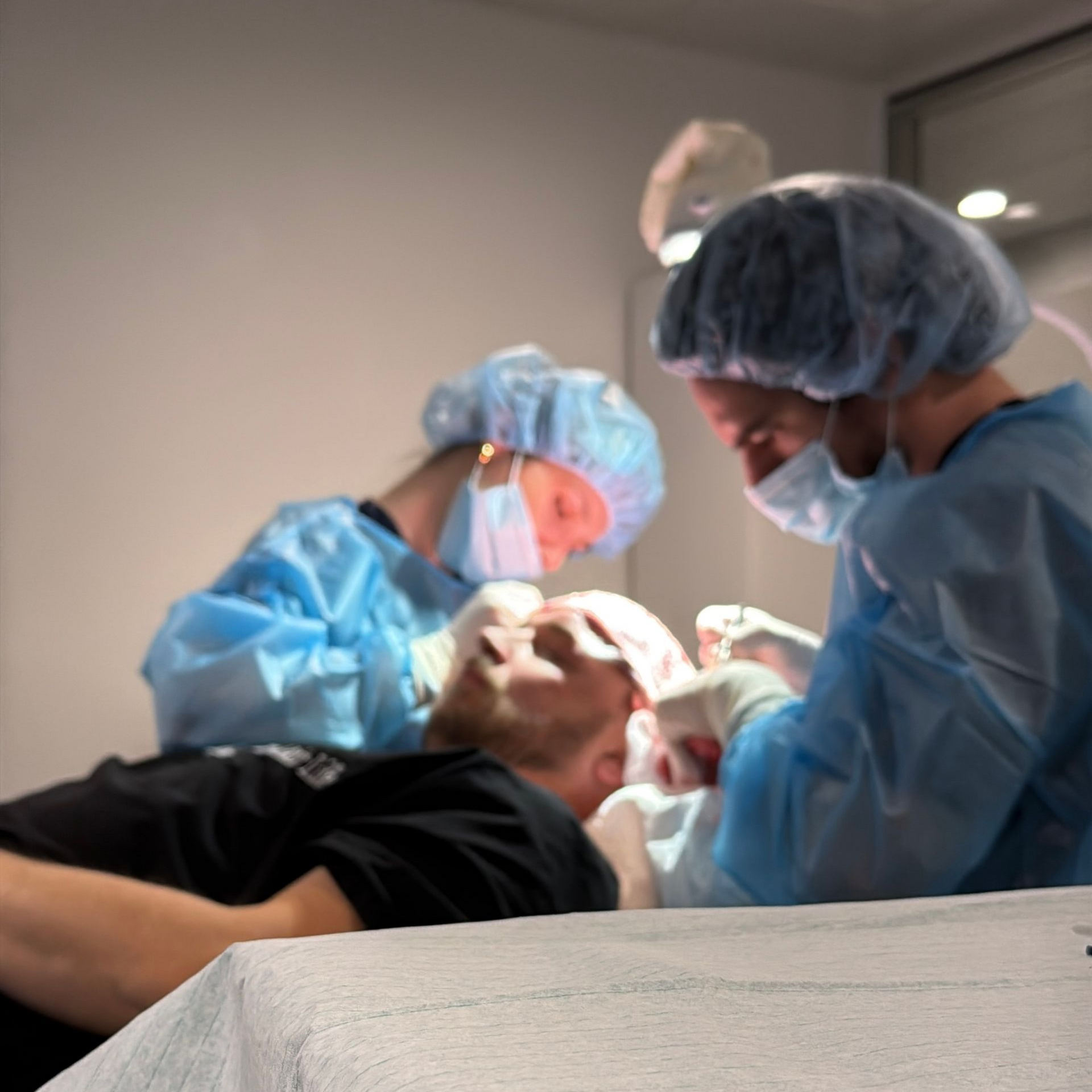Hair loss treatment with micrografting
Micrografting has proven to be the only scientifically validated, groundbreaking method for hair restoration. Here’s everything you need to know about it!
In the following, we’ll explore the best place for tissue-based hair therapy and highlight the key reasons why this innovative technique is especially effective. Based on solid scientific findings, we’ll provide an overview of what you can expect—and how we deliver on those expectations.
How Micrografting Works for Hair Loss – In 4 Steps
Step 1: Consultation and Assessment
Your journey begins with a conversation with our specialist, who will take the time to understand your individual situation. This includes examining your scalp, discussing your medical history, and assessing the extent of your hair loss. Based on this evaluation, the specialist will determine whether you're a suitable candidate for micrografting and tailor the treatment to your needs.
Step 2: Tissue Extraction
The next step involves harvesting the body’s own healing building blocks—regenerative tissue. This is typically collected from areas with abundant fat deposits, such as the abdomen or thighs. Alternatively, bone marrow can also be used. These procedures are generally minimally invasive and performed under local anesthesia to ensure your comfort and safety.
Step 3: Preparation and Application of the Tissue
Once harvested, the tissue is processed in a controlled environment to enhance its regenerative potential. The resulting concentrate—rich in healing factors—is then applied to the areas of the scalp affected by hair loss, either through precise injections or soothing topical treatments.
Step 4: Monitoring and Gradual Progress
Patience is key after the treatment. While early visible results can be encouraging, the real transformation happens beneath the surface. The revitalized tissue reactivates dormant hair follicles and stimulates new hair growth—a process that typically unfolds over several months.
Throughout this period, you’ll have regular follow-up appointments with our specialist. These allow for close monitoring of your progress and the ability to fine-tune your treatment plan as needed.
Micrografting for Hair: Cost
The cost of micrografting treatment depends on several factors:
- Location of the clinic
- Expertise of the medical team
- Specific protocol used
- Number of required sessions
- Extent of hair loss
As an advanced, personalized method, micrografting may seem more costly than other options. However, its natural regeneration, minimal invasiveness, and tailored approach make it a scientifically grounded solution for sustainable hair growth.
For a personalized quote, we recommend contacting us directly..
Micrografting Hair: Before and After Results
Micrografting is considered a revolutionary approach to hair restoration. Studies show an average increase in hair density of 29% within 23 weeks after treatment. It is especially effective in the early stages of hair loss. While it cannot replace fully lost hair roots, it can significantly improve hair density, texture, and vitality—boosting self-confidence in the process.
Am I a Candidate for Micrografting Hair Transplantation?
The following criteria help determine your suitability:
- Degree of Hair Loss: Best results are seen in early to moderate stages, when weakened follicles are still present.
- Overall Health: Your general physical condition must allow for treatment.
- Age: Younger individuals typically have more active follicles and achieve better outcomes.
- Expectations: Realistic expectations are essential. The treatment enhances results but is not a miracle cure.
A personal consultation at Swiss Hair Life in Oftringen will help assess your individual eligibility.
Difference Between Micrografting and PRP Treatment
Both methods harness the body's own healing mechanisms—but in different ways:
- PRP (Platelet-Rich Plasma): Blood is drawn, and the platelet-rich component is injected into the scalp to stimulate hair growth via growth factors.
- Micrografting: Regenerative components are extracted from tissue and act on the follicles more deeply, aiming for long-term improvement in function.
Both treatments are minimally invasive and safe. We’d be happy to help you determine which option is best suited for you in a personal consultation.










